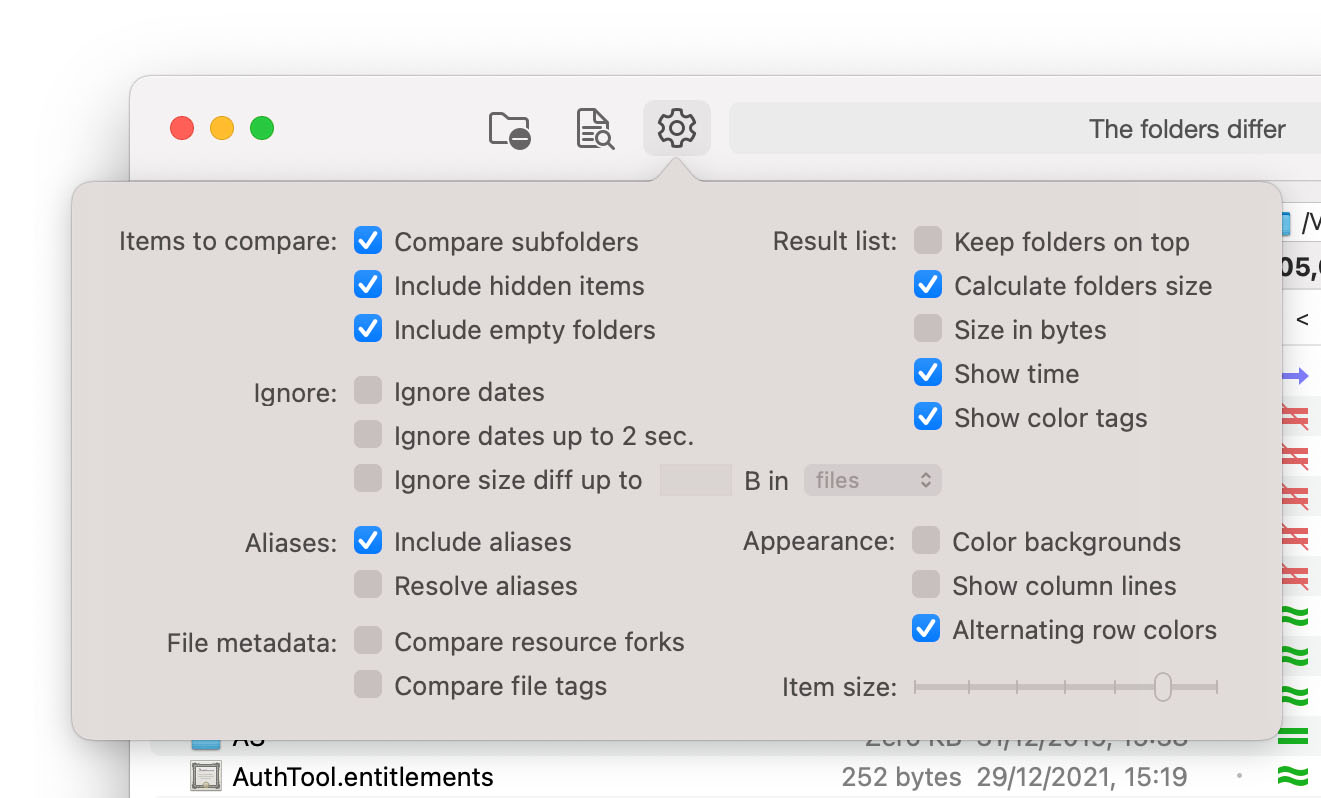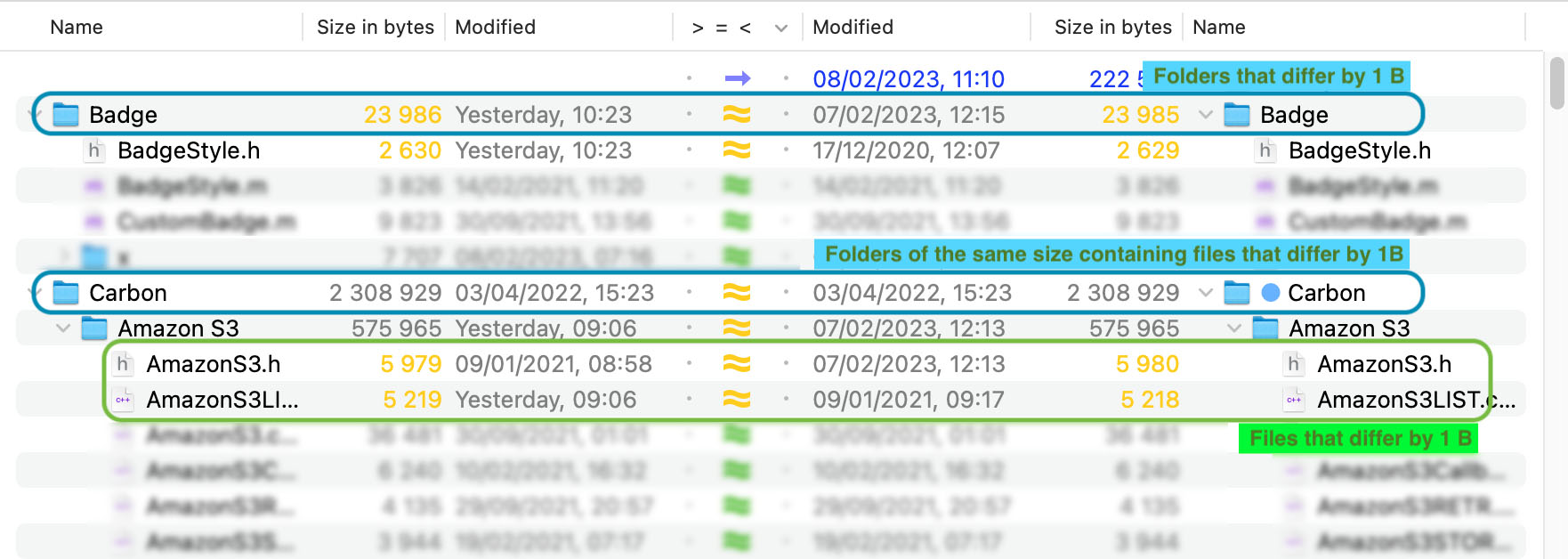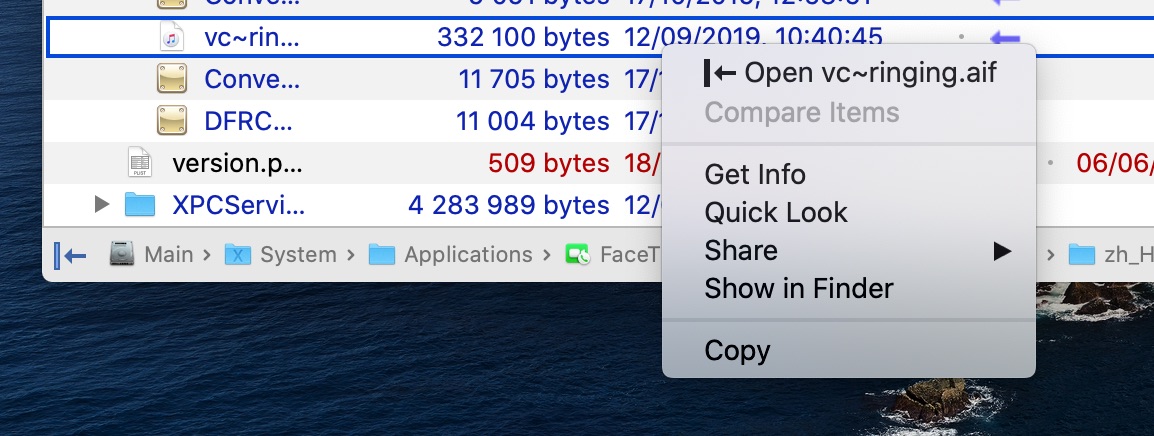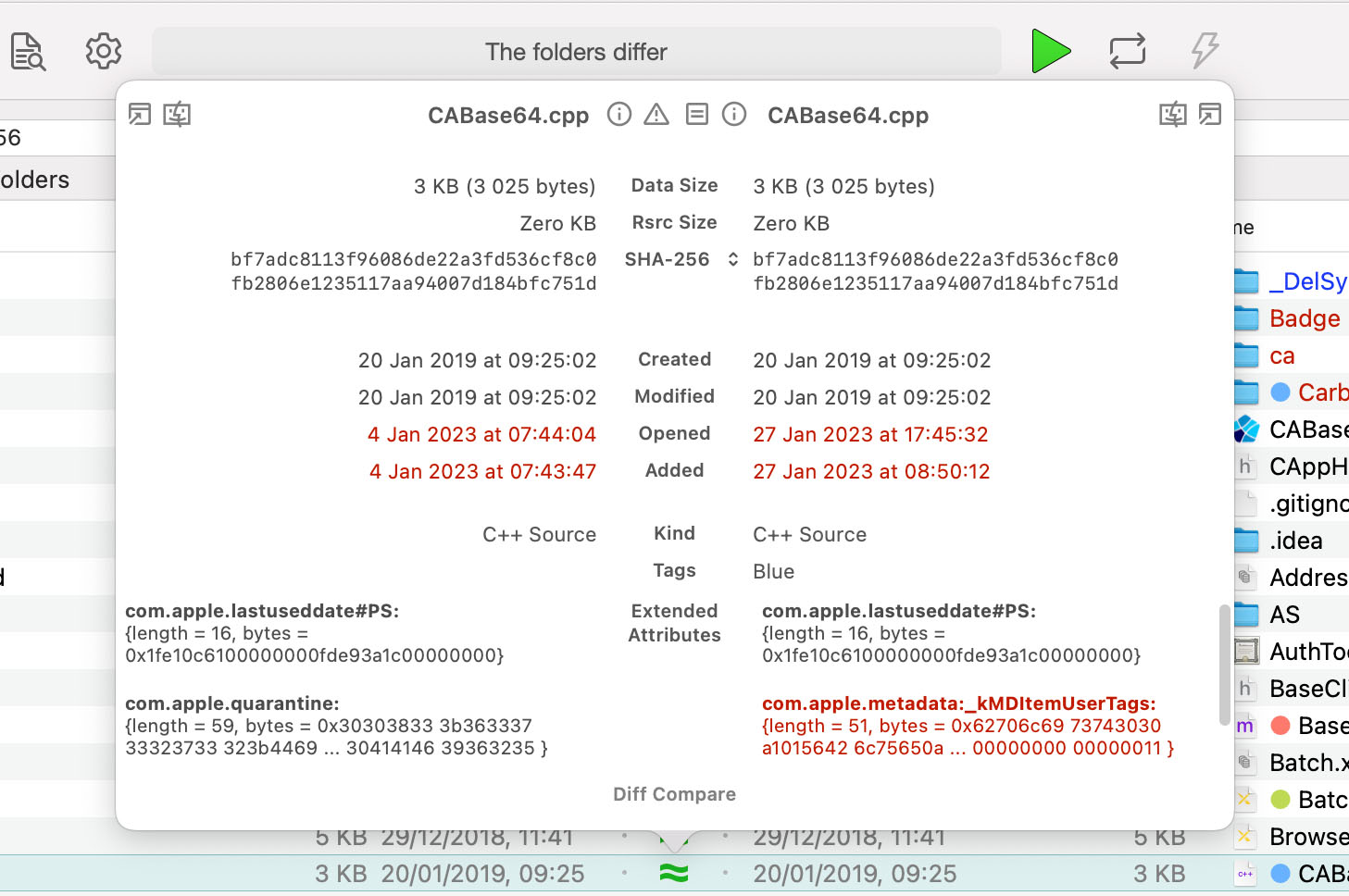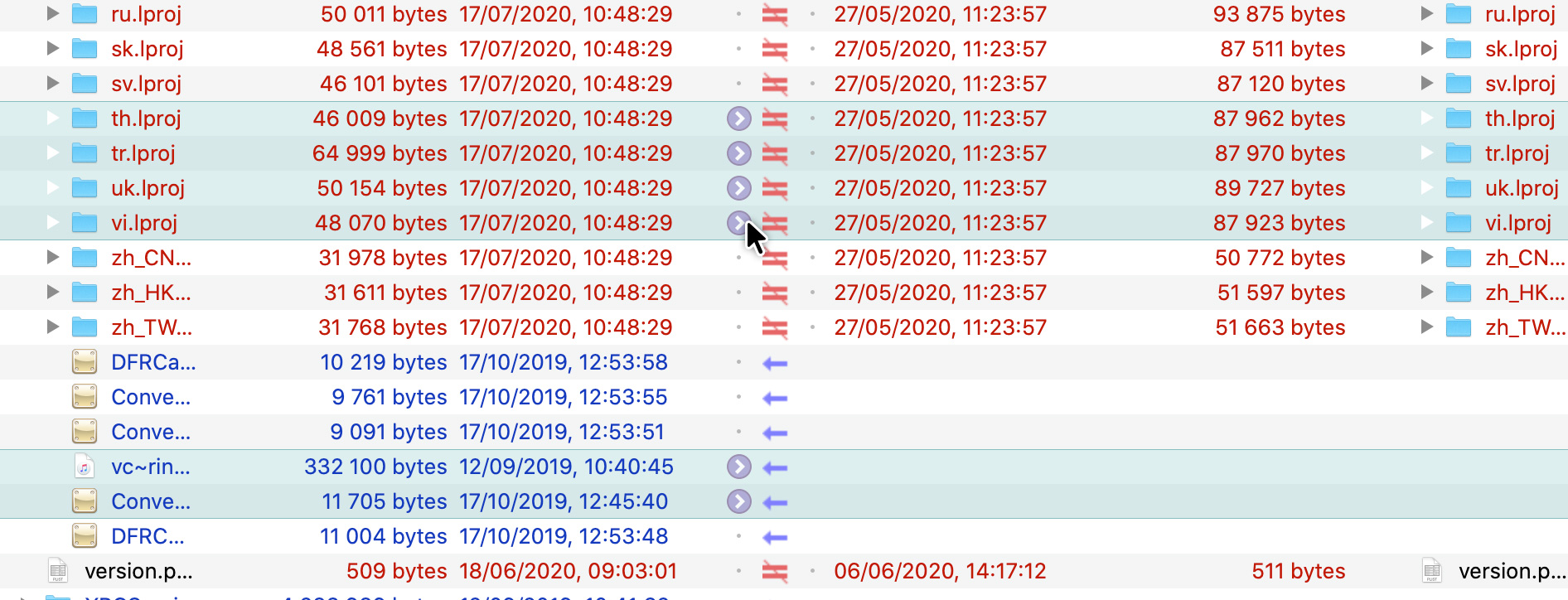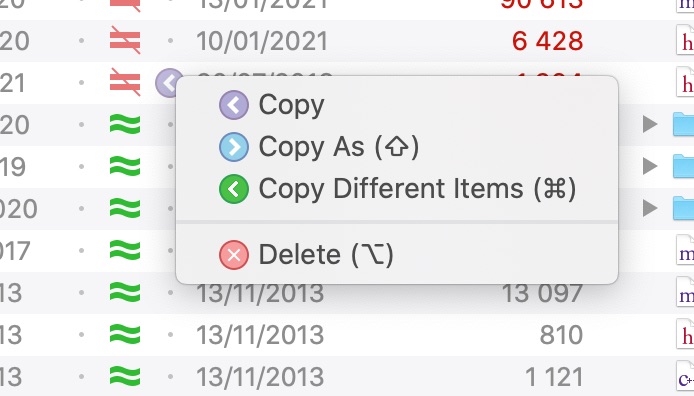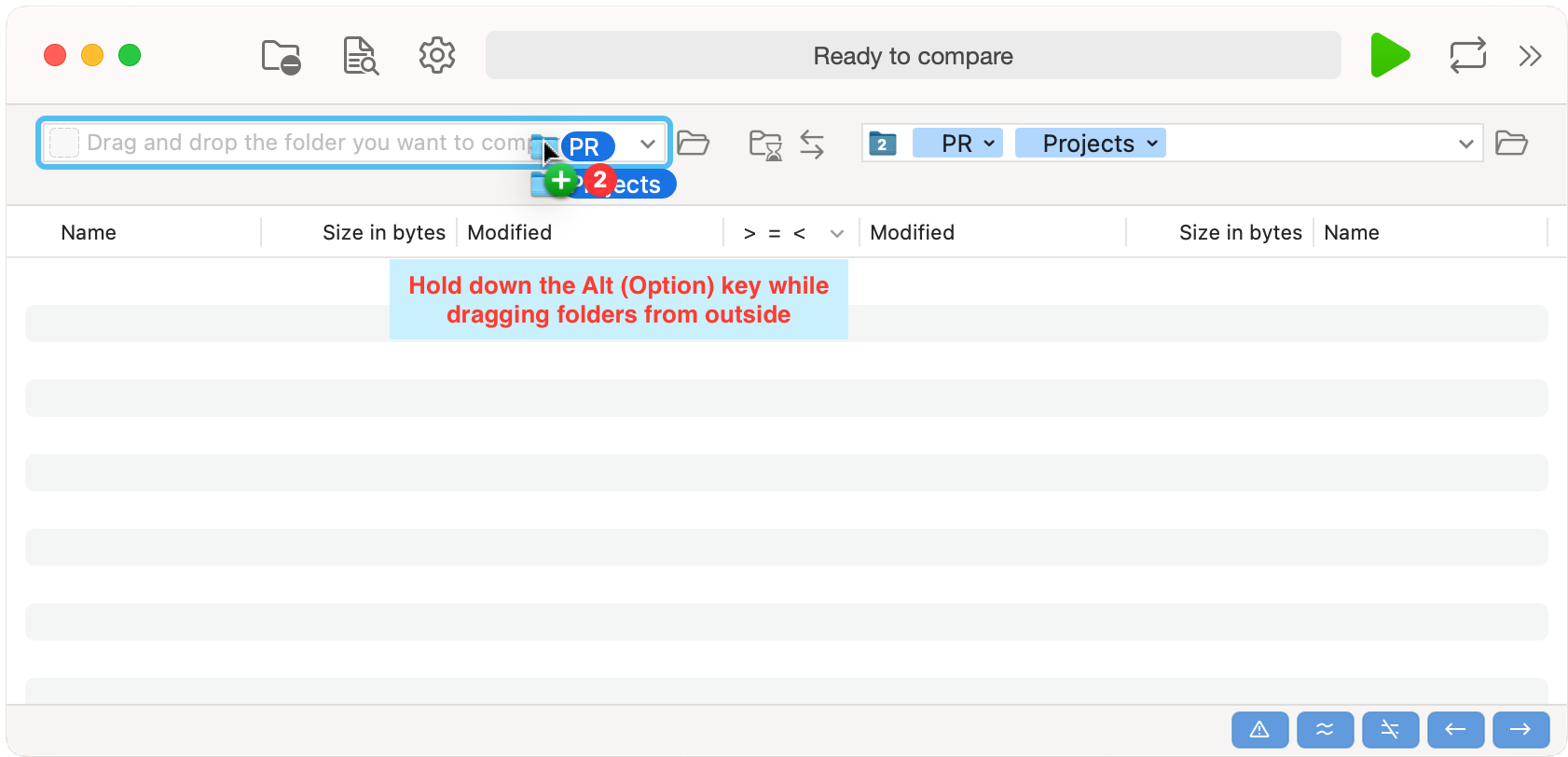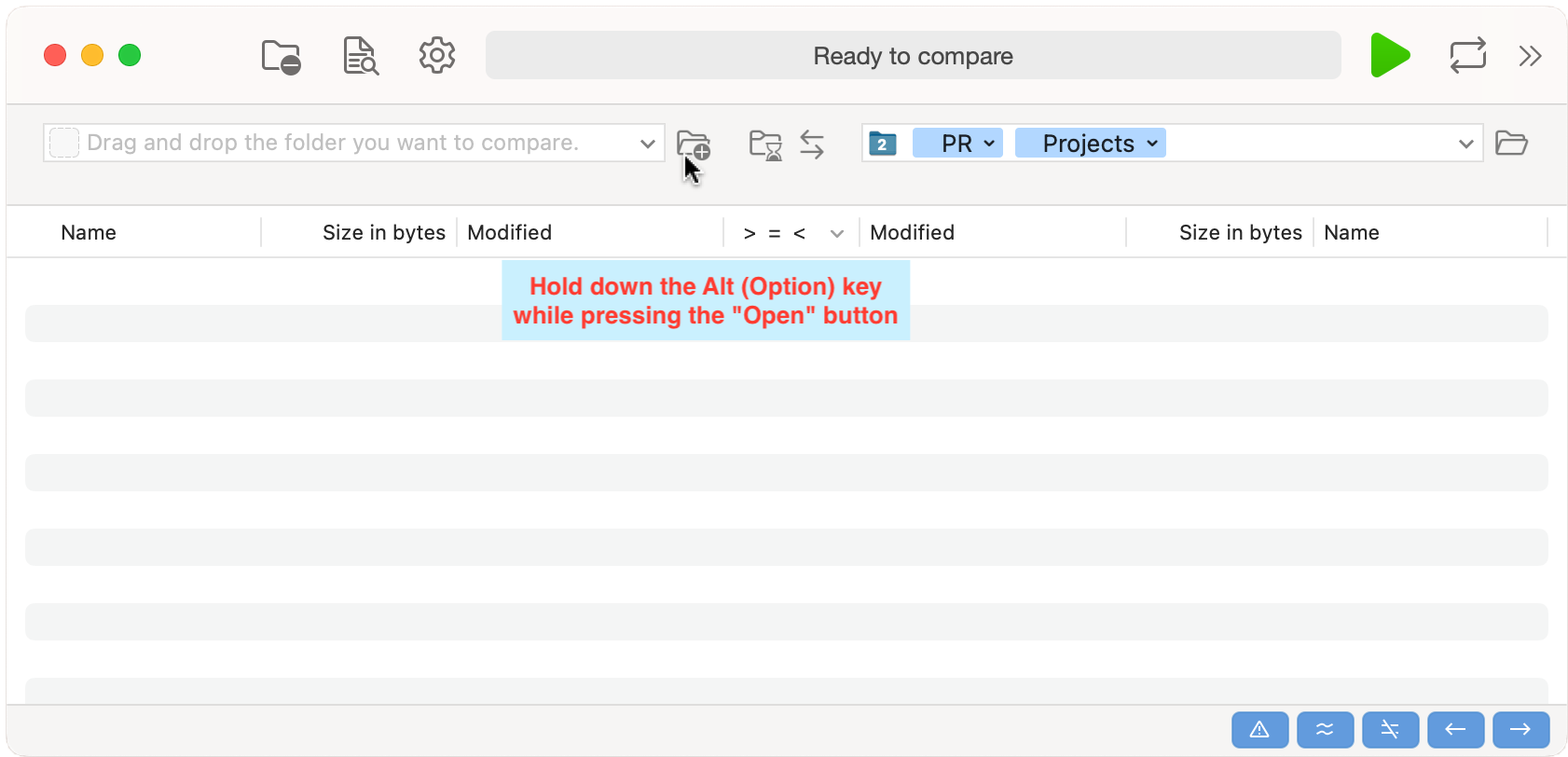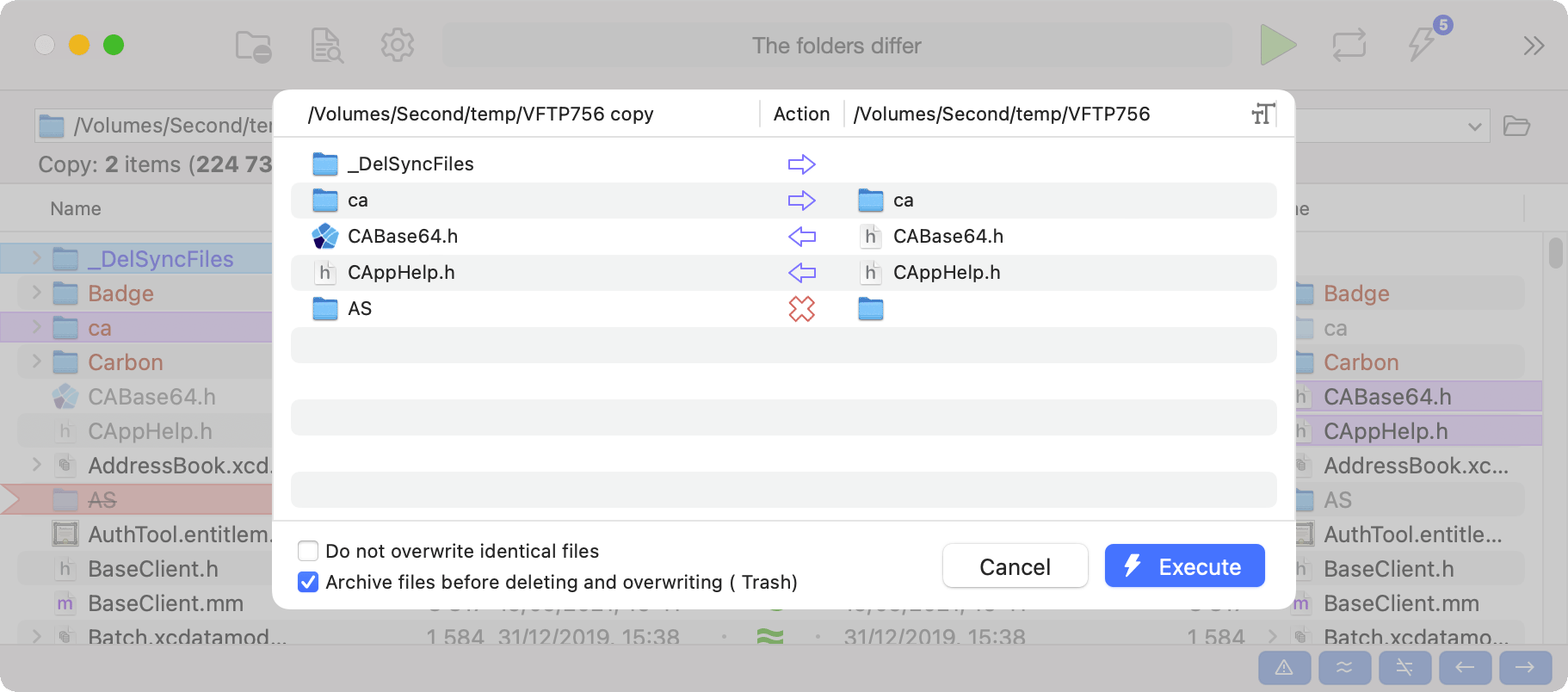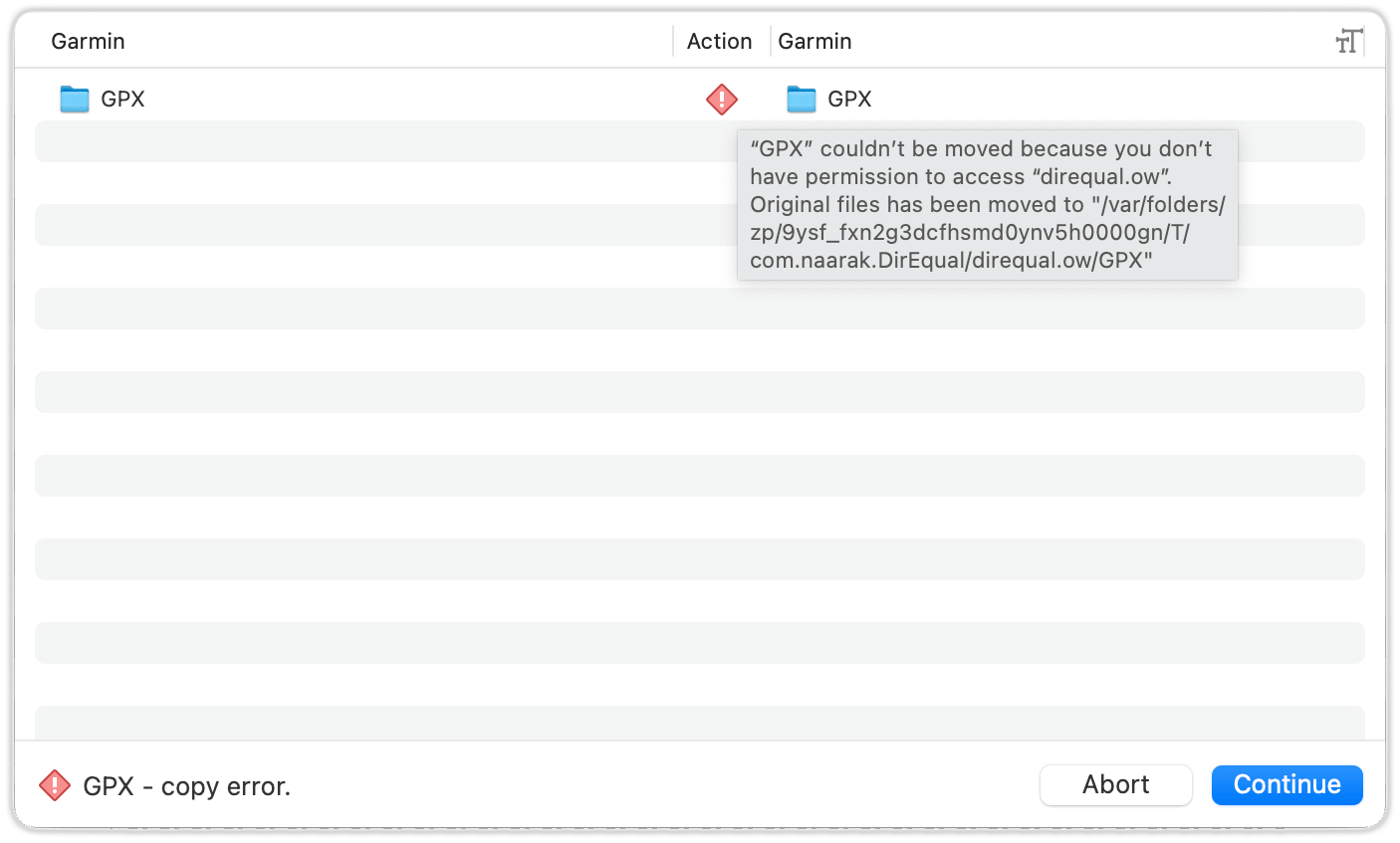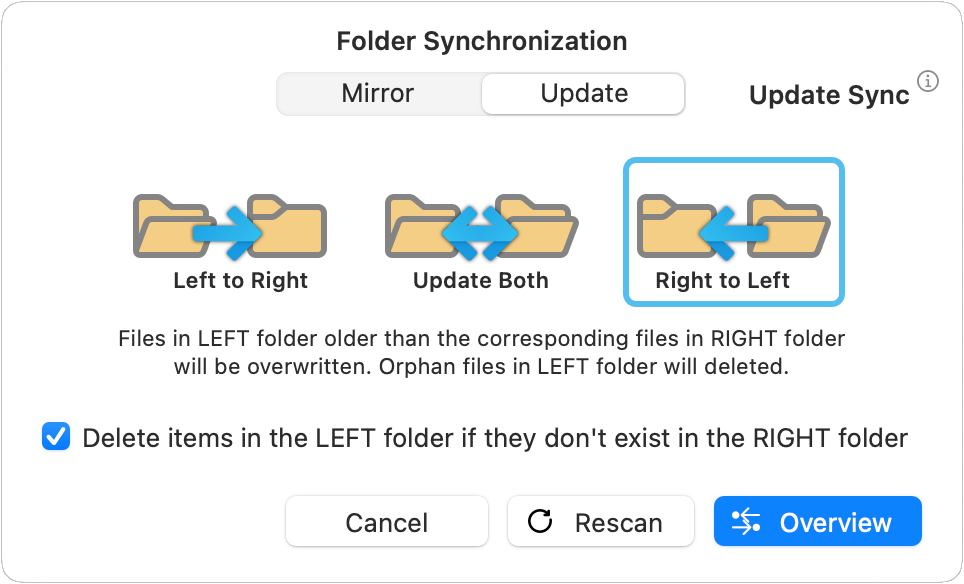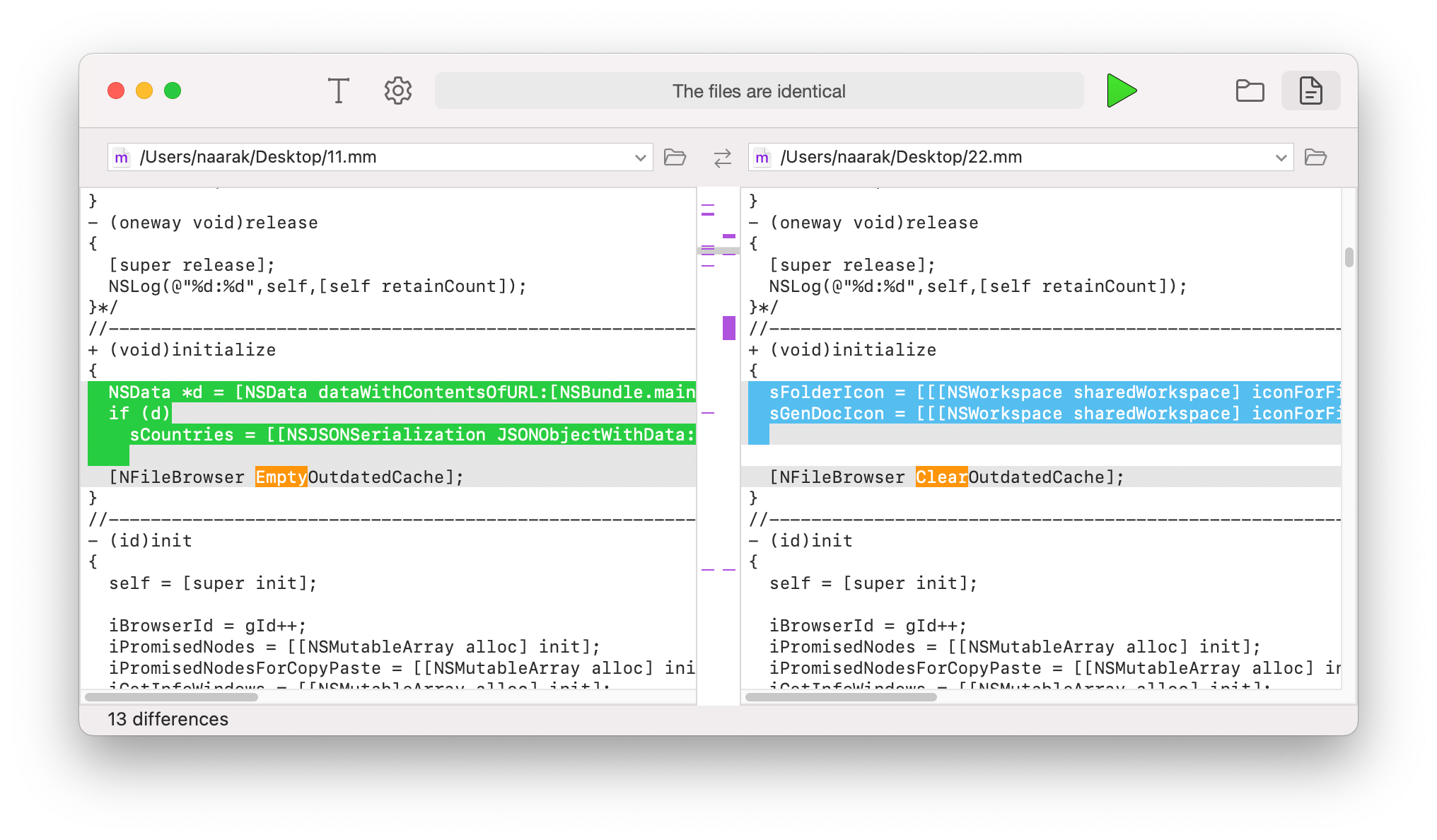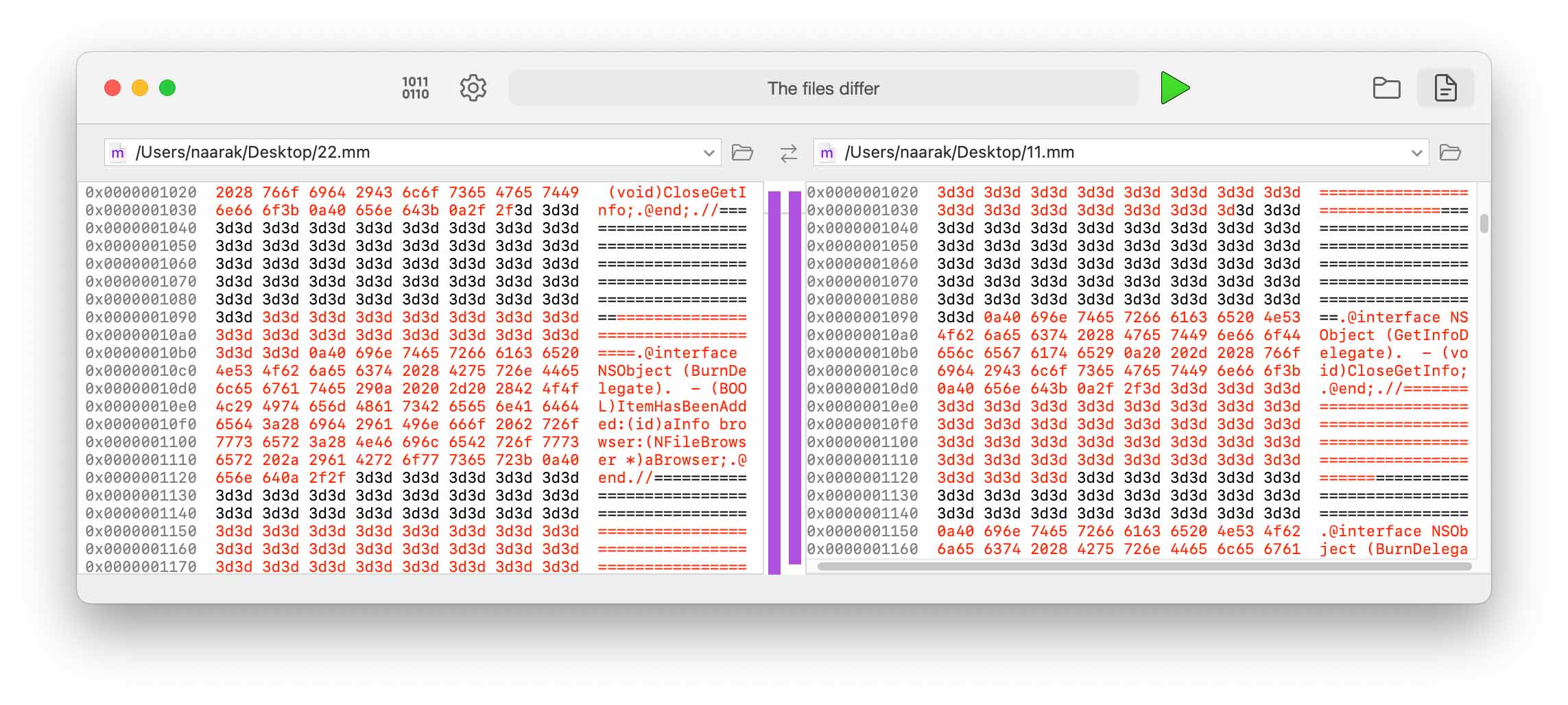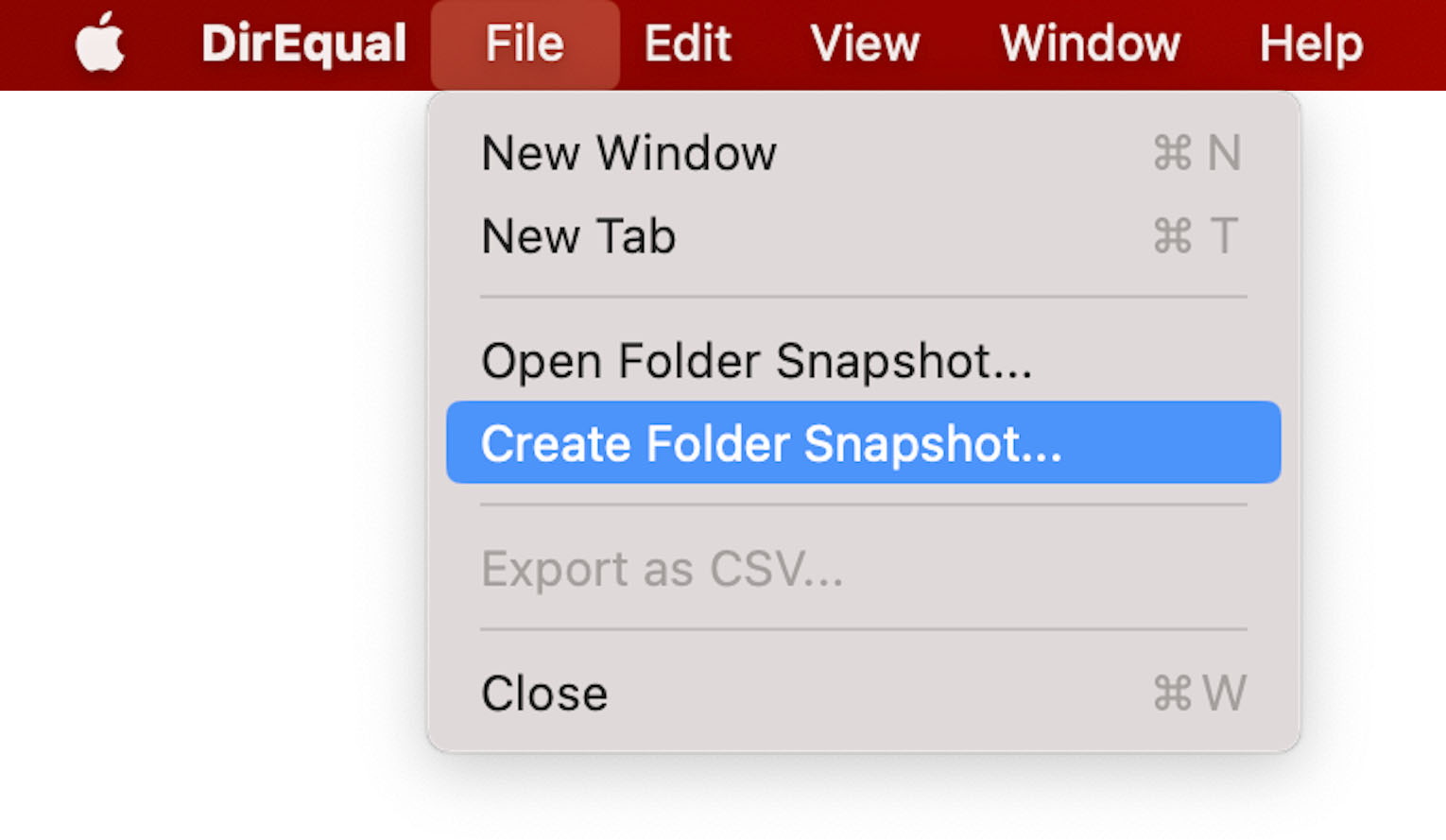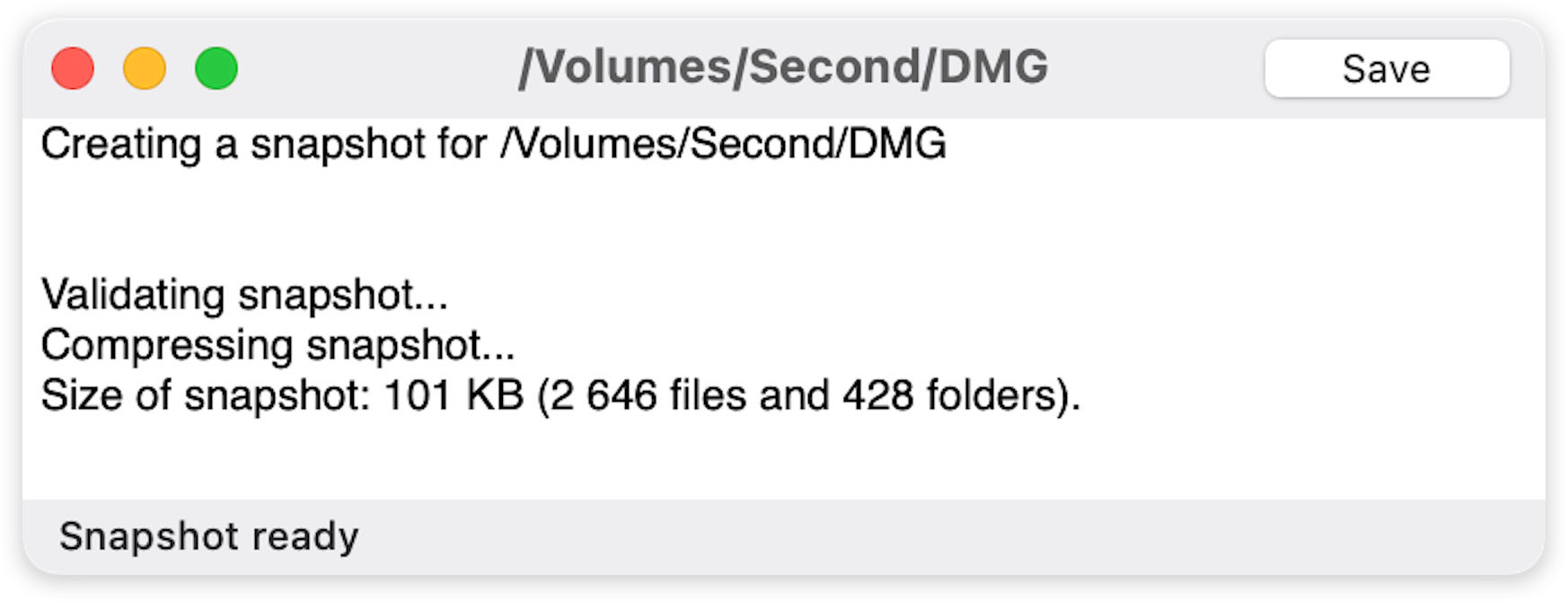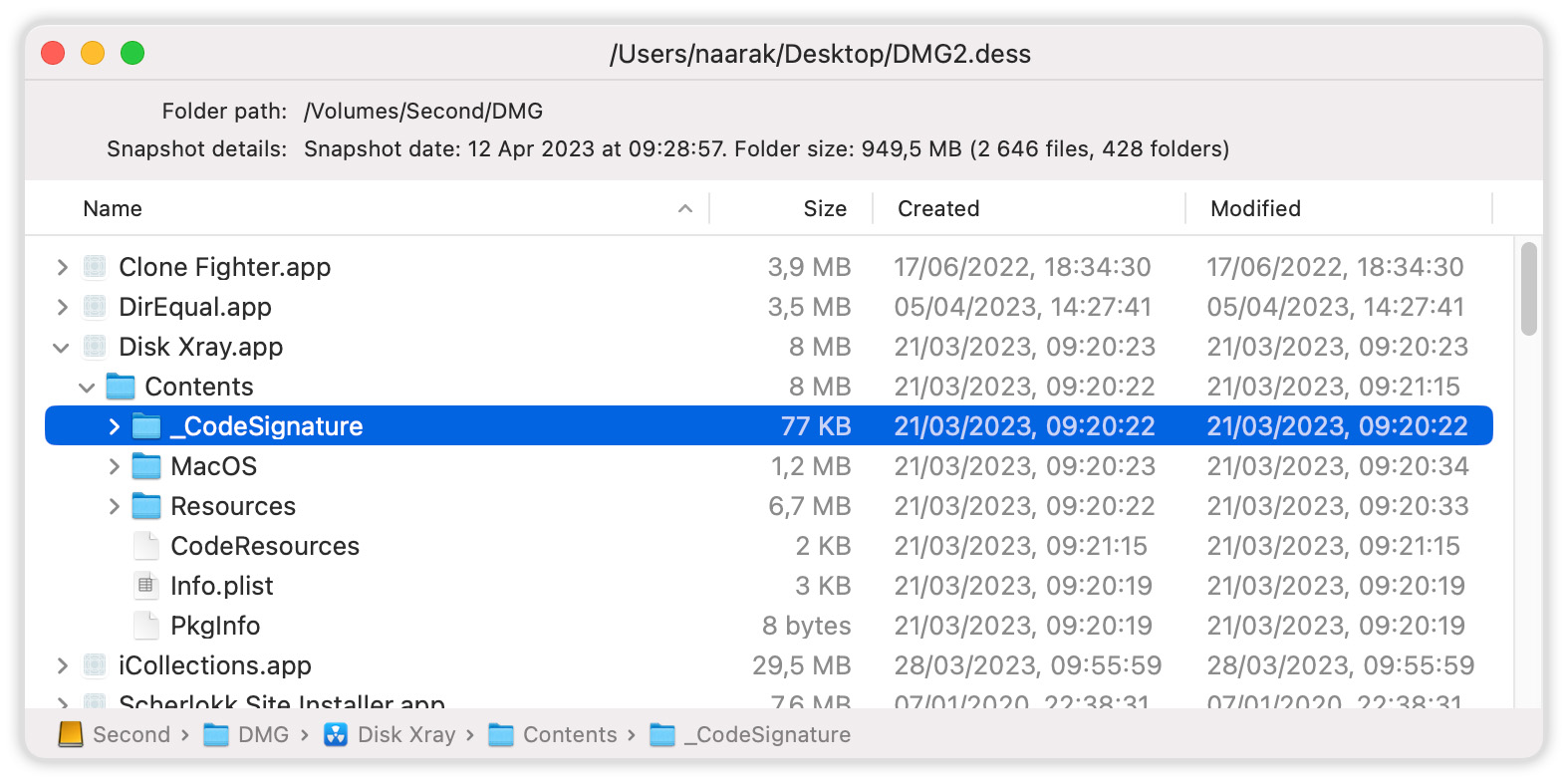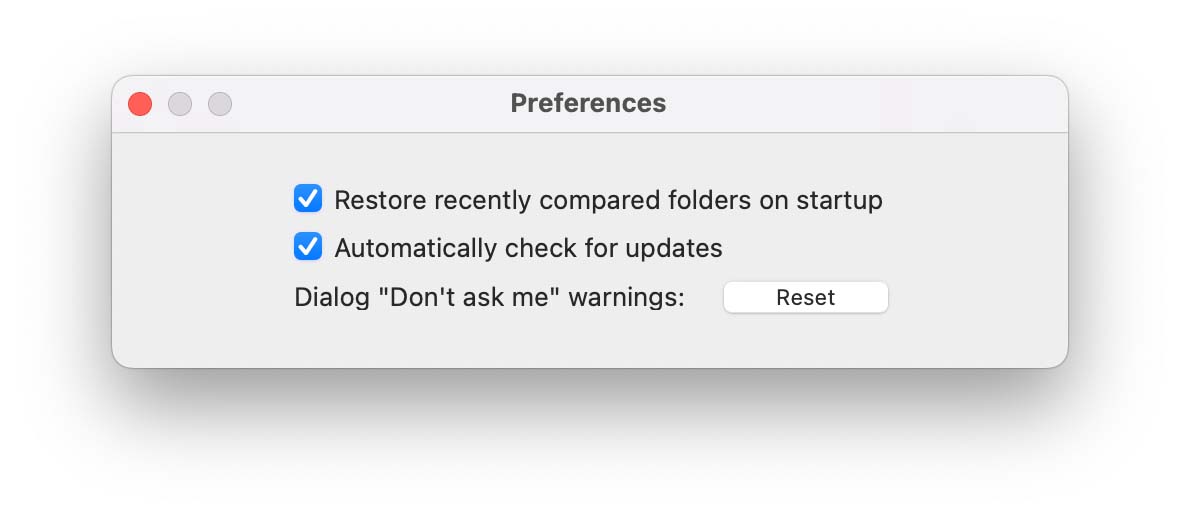(7) Path navigator (not shown on the screenshot) displays the path of a selected file or folder. The path for left file is displayed if you select the file on the left side. The path for right file is displayed if you select the file on the right side.
(8) Blue, red and purple arrows indicate actions to be performed. To set an action, click the dot in the middle column (> = <). You can set up three types of actions: Copy, Copy As, and Delete. When you click the dot in the middle column without pressing any additional key, the "Copy" action will be set. The action is represented by an arrow (red color if overwrite will cause overwrite). To set "Copy As" action hold down the Shift key while clicking the dot. To set the "Delete" action, hold down the Option key while clicking the dot. To select only items that differ, press the Command key and click the items' parent folder.
After clicking the dot icon on selected elements, the action will be applied to all selected elements:
